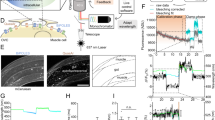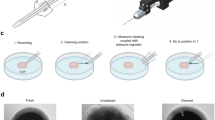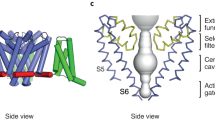Abstract
PLACING nerve membrane in the feed-back arm of an operational amplifier allows one to see what current is needed to make the membrane follow a change in voltage across it. Such a measure, termed ‘Voltage clamp’, has been used for the giant axon of the squid by Hodgkin and Huxley1. Their exhaustive study showed several specific non-linear ionic conductances the behaviour of which accounted for the properties of the excited membrane. Whether all irritable tissues show qualitatively the same pattern and use the same ions is yet unknown, since Hodgkin and Huxley's essay has been unique. We have now succeeded in devising voltage clamps for both the node of Ranvier and the cell body.
This is a preview of subscription content, access via your institution
Access options
Subscribe to this journal
Receive 51 print issues and online access
$199.00 per year
only $3.90 per issue
Buy this article
- Purchase on Springer Link
- Instant access to full article PDF
Prices may be subject to local taxes which are calculated during checkout
Similar content being viewed by others
References
Hodgkin, A. L., and Huxley, A. F., J. Physiol., 117, 500 (1952).
Tasaki, I., Amer. J. Physiol., 125, 367 (1939).
Stämpfli, R., Helv. Physiol. Acta, 4, 411 (1946).
Author information
Authors and Affiliations
Rights and permissions
About this article
Cite this article
CASTILLO, J., LETTVIN, J., McCULLOCH, W. et al. Membrane Currents in Clamped Vertebrate Nerve. Nature 180, 1290–1291 (1957). https://doi.org/10.1038/1801290a0
Issue Date:
DOI: https://doi.org/10.1038/1801290a0
This article is cited by
-
A new voltage clamp method for Ranvier nodes
Pfl�gers Archiv European Journal of Physiology (1969)
Comments
By submitting a comment you agree to abide by our Terms and Community Guidelines. If you find something abusive or that does not comply with our terms or guidelines please flag it as inappropriate.



